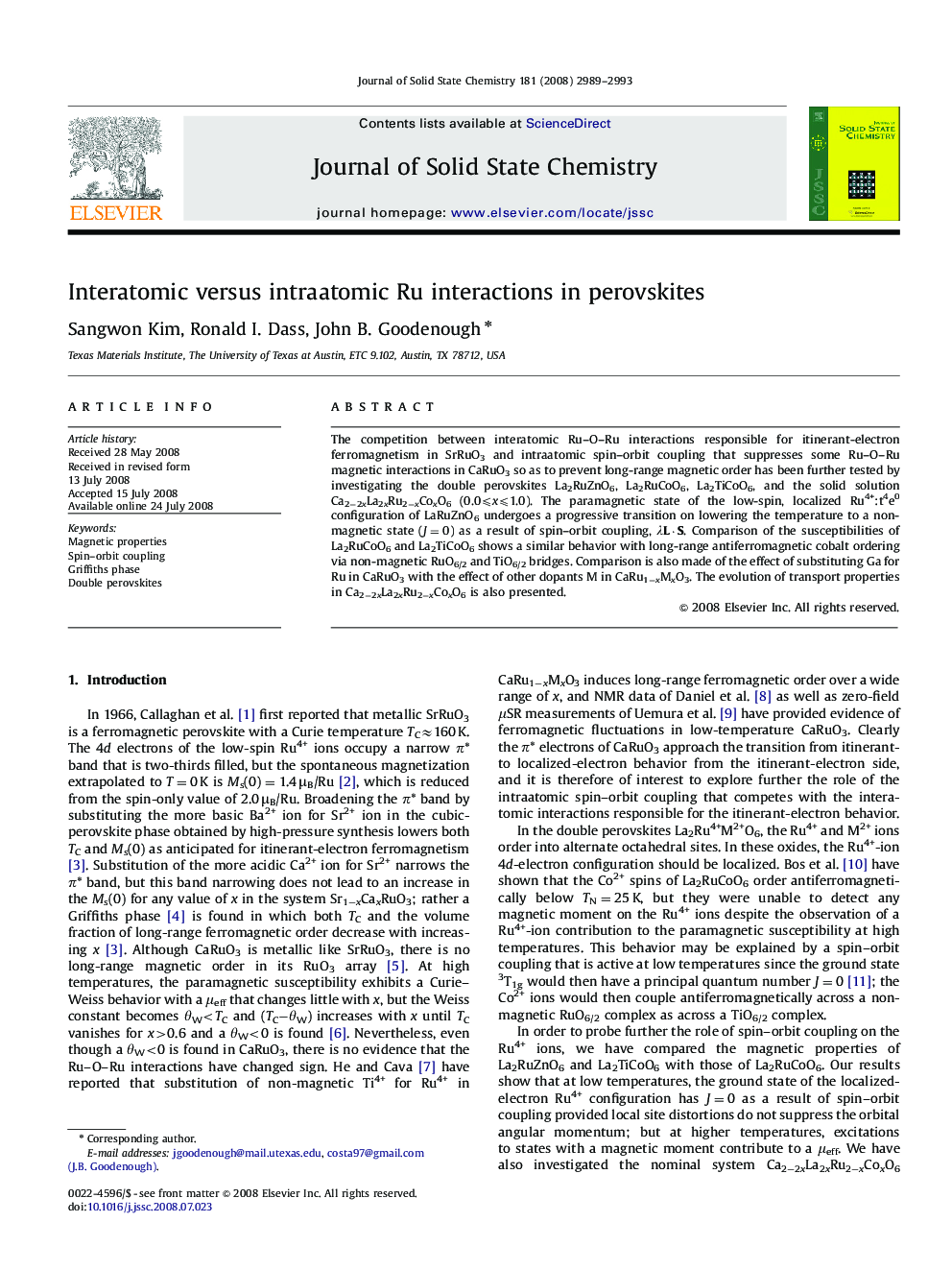| Article ID | Journal | Published Year | Pages | File Type |
|---|---|---|---|---|
| 1329742 | Journal of Solid State Chemistry | 2008 | 5 Pages |
The competition between interatomic Ru–O–Ru interactions responsible for itinerant-electron ferromagnetism in SrRuO3 and intraatomic spin–orbit coupling that suppresses some Ru–O–Ru magnetic interactions in CaRuO3 so as to prevent long-range magnetic order has been further tested by investigating the double perovskites La2RuZnO6, La2RuCoO6, La2TiCoO6, and the solid solution Ca2−2xLa2xRu2−xCoxO6 (0.0⩽x⩽1.0). The paramagnetic state of the low-spin, localized Ru4+:t4e0 configuration of LaRuZnO6 undergoes a progressive transition on lowering the temperature to a non-magnetic state (J=0) as a result of spin–orbit coupling, λL·S. Comparison of the susceptibilities of La2RuCoO6 and La2TiCoO6 shows a similar behavior with long-range antiferromagnetic cobalt ordering via non-magnetic RuO6/2 and TiO6/2 bridges. Comparison is also made of the effect of substituting Ga for Ru in CaRuO3 with the effect of other dopants M in CaRu1−xMxO3. The evolution of transport properties in Ca2−2xLa2xRu2−xCoxO6 is also presented.
Graphical abstractThe competition between interatomic Ru–O–Ru interactions responsible for itinerant-electron ferromagnetism in SrRuO3 and intraatomic spin–orbit coupling that suppresses some Ru–O–Ru magnetic interactions in CaRuO3 so as to prevent long-range magnetic order has been further tested by investigating the double perovskites La2RuZnO6, La2RuCoO6, La2TiCoO6, and the solid solution Ca2−2xLa2xRu2−xCoxO6 (0.0⩽x⩽1.0).Figure optionsDownload full-size imageDownload as PowerPoint slide
